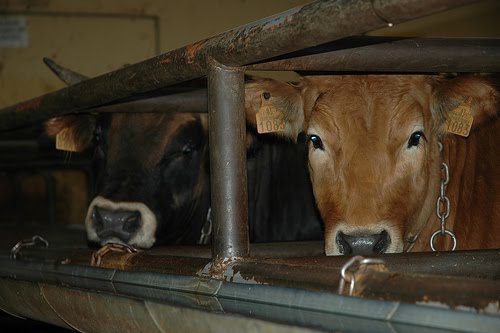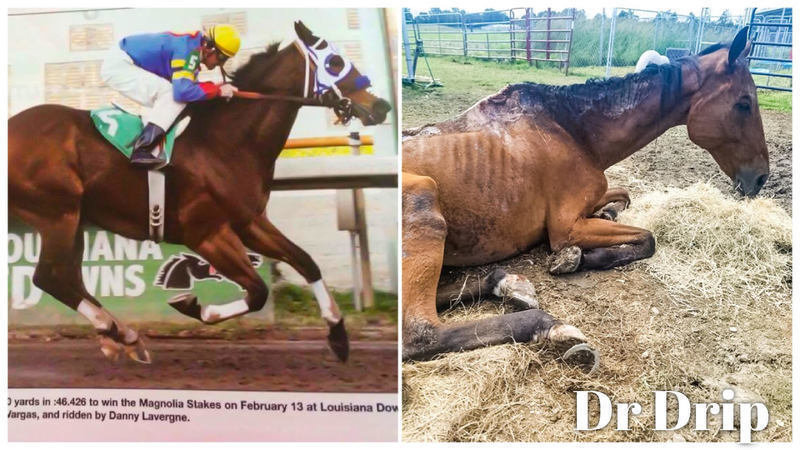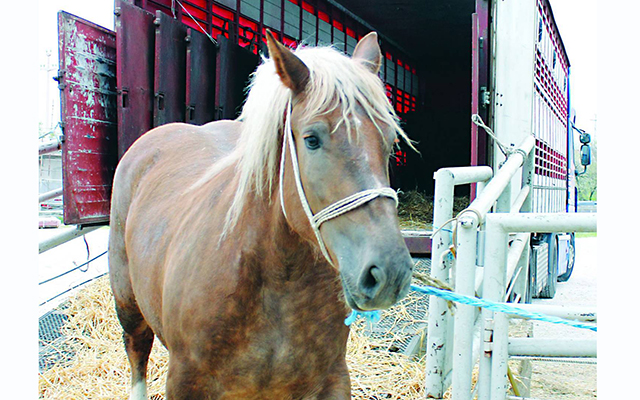
by Sandra Kyle, Editor, May Safely Graze
When non vegans say things like ‘But plants have feelings too’ they are generally being disingenuous. If someone says it to me I usually answer along the lines of:
‘Would you prefer to take your child strawberry picking or to a slaughterhouse?’
or
“If a dog runs out in front of your car, would you swerve into a bed of roses, or save the roses and run over the dog?’
Disingenuousness aside, it is entirely possible that in the future we may learn that plants do experience pain using different mechanisms. But at our present level of understanding, and as they have no nervous system or pain detectors, we are justified in stating that plants do not feel pain, and our common sense tells us that equating animal and plant sentience is not a credible position.
Humans and non-human animals share a long, common evolution, and anyone who keeps animal companions know that they are more similar to us than dissimilar. Dogs even have prostates I was told yesterday by a vet. When I look into my dogs’ eyes I can recognise myself. When I look at a cauliflower – not so much!
“Dogs even have prostates I was told yesterday by a vet. When I look into my dogs’ eyes I can recognise myself. When I look at a cauliflower – not so much!”
Animals are our kin, our planetary comrades. Despite being different species, they share our ability to feel, and they value their lives just as much as we value ours.
If your child were to visit a slaughterhouse it is unlikely that they would escape without trauma by witnessing the gruesome violence that goes on there. Most adults too would be wounded to witness innocent, terrified animals being stunned, gassed, knifed, decapitated and dismembered. It is a horrible business, and little wonder that the terms used in these places sugarcoat the reality. Even the word ‘slaughterhouse’ is not used by the Industry. In some parts of the world they are called ‘factories’. Here in New Zealand they are called ‘meatworks’.
We use euphemisms in our relationship with other humans to substitute for the stark reality that most of us find disturbing to think about. Going after wild animals with a shotgun or spear is known as ‘harvesting’. Destroying farmed animals’ lives when it is deemed the most ‘effective’ response, is known as ‘depopulation’. The act of slaughtering billions of farmed animals every year, often when they are still little more than babies, needs to be sanitised to mitigate the horror, and to make us feel better about eating them. For example ‘C02 stunning’ may sound as if the animal goes gently to sleep, but it is a cruel method that causes pigs to gasp for breath and hyperventilate, causing both pain and panic for up to sixty seconds. Similarly, ‘thumping’ is the term used to kill piglets (and also baby goats) by swinging them around and pounding their heads against concrete.
“The act of ending the lives of innocent animals, often when they are still little more than babies, needs to be sanitised to mitigate the horror, and to make us feel better about eating them.”
We should stop using euphemisms to describe the horror of animal slaughter, and tell it as it is.
That way we may wake up to the suffering we cause every time we eat dairy products, or eat a meal of meat.
SOME SLAUGHTERHOUSE TERMS
Antemortem inspection: The examination of live animals prior to slaughter to check for disease.
Blood Pit: The area of a slaughterhouse where animals are bled out.
Bloodsplash: The rupture of capillaries in muscle tissue during electrical stunning which causes unsightly blood spots in the meat. Bloodsplash hemorrhages are problematic from an aesthetic viewpoint, and cause a reduction in meat value.
Bung: A slaughtered animal’s anus.
Captive bolt gun: A gun, powered by compressed air or gunpowder, that drives a bolt into an animal’s forehead to render the animal unconscious.
Carcass: The skeleton and musculature of an animal, minus after decapitation and removal of the legs.
Chain: The overhead conveyor that carries shackled animals from worker to worker through the slaughter and dressing processes.
Chain speed: How fast the chain is moving, measured in number of animals per unit of time. (Aka Line speed)
Chitlins: The intenstines of hogs (pigs) used in prepared foods.
Chutes: Enclosed passageways that lead animals from their pens to the stun area.
CO2 stunning (carbon dioxide anaesthesia): A method used to render an animal unconscious for slaughter.
Downer: A sick, spent, or disabled animal who cannot stand or walk.
Dressing: Removal of the hide, appendages and viscera.
Gutter: A worker who takes the guts out of slaughtered animals.
Hot shot: An electric cattle prod.
Kill floor: Where animals have their necks or chests sliced.
Legger: The worker who cuts off and skins an animal’s legs.
PACing (also called ‘thumping’): Method of killing piglets whereby the piglet is picked up by the hind legs and slammed against the floor. This causes massive head trauma, resulting in death (not always instantaneous).
Render: The process whereby animal parts are cooked down, to separate fat from protein, and then sold for use in animal feed, fertilizer, oils, plastics, cosmetics and a host of other household and industrial products.
Ritual slaughter: Religious slaughter done according to the requirements of either the Muslim or Jewish religious faith. The animal is slaughtered, often without being stunned, with a razor sharp knife.
Scalding tank: A long narrow tank containing 140 degree water through which pigs are dragged to loosen hair for dehairing.
Shackler: A worker who places a chain around an animal’s hind leg so that it can be hoisted and hung on the overhead rail.
Stunner: The worker who stuns the animals before they are shackled and hoisted.
Sticker: The slaughterhouse worker who cuts the animal’s throat open to bleed it.




